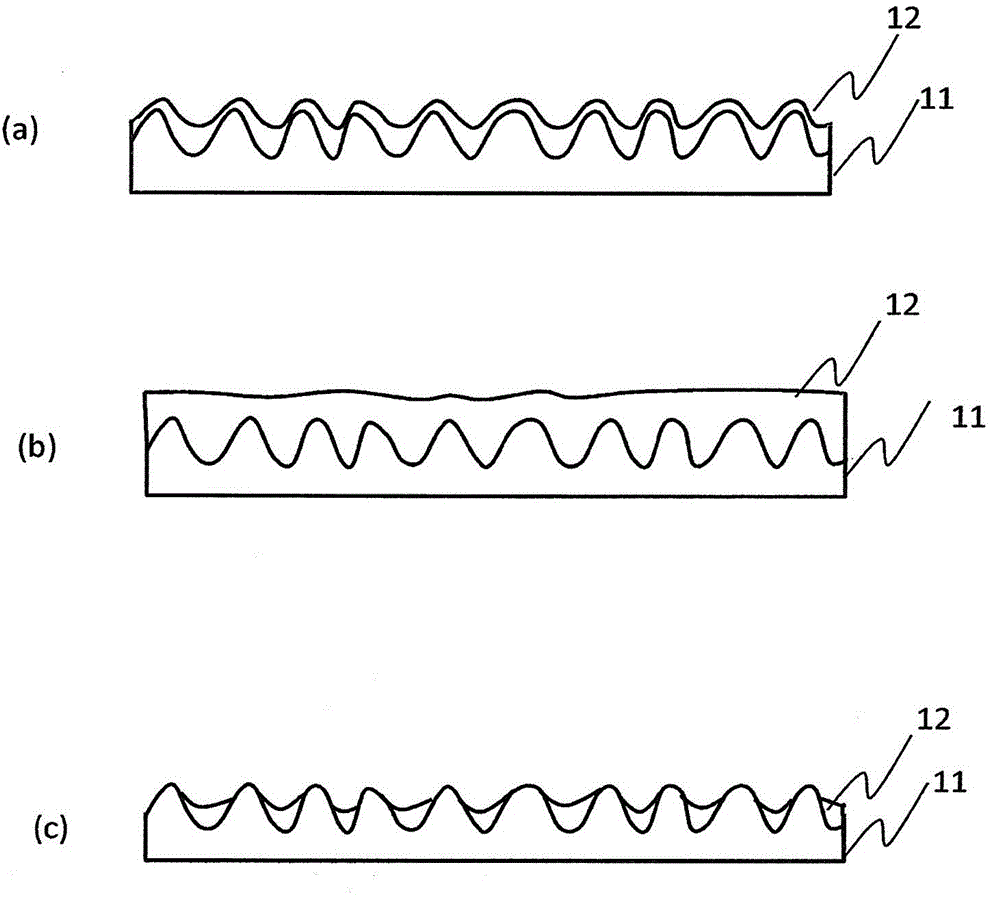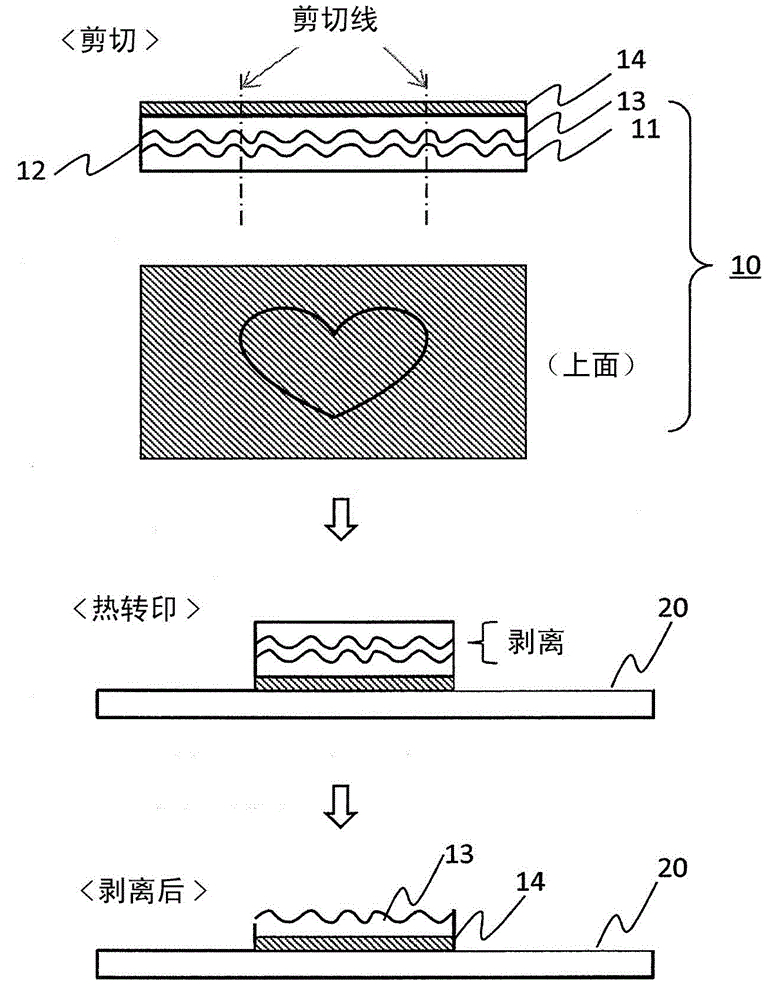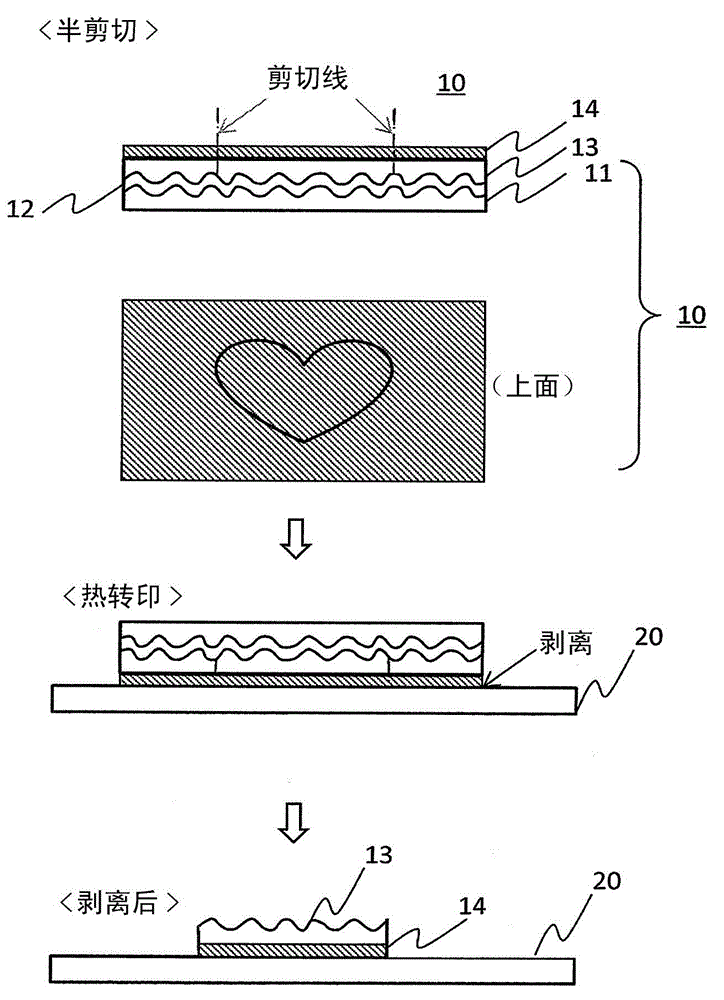Thermal transfer sheet and printed material manufacturing method
A manufacturing method and heat transfer printing technology, applied in chemical instruments and methods, techniques for producing decorative surface effects, decorative arts, etc., can solve the problems of lack of luster of parts, hindering the visibility of colored layers, etc., and achieve peelability good effect
- Summary
- Abstract
- Description
- Claims
- Application Information
AI Technical Summary
Problems solved by technology
Method used
Image
Examples
Embodiment 1
[0058] One surface of a 100 μm resin film (Lumirror S10: Toray Industries, Inc.) was sandblasted to produce a base material (Ra: 0.9 μm) having an uneven shape. On the uneven surface of the substrate, a release layer having the following composition was applied so that the thickness calculated from the coating amount based on the formula (1) (hereinafter, the same) was 0.3 μm The liquid is applied and dried to form a release layer. Next, a protective layer coating solution having the following composition was applied on the release layer so as to have a thickness of 1.5 μm, and dried to prepare a thermal transfer sheet of Example 1.
[0059]
[0060] ·Amino alkyd resin containing long chain alkyl group 3 parts
[0061] (Tess Fine303: Hitachi Kasei Polymer Co., Ltd., solid content 48%)
[0062] ·Alkyd resin 0.6 parts
[0063] (Bekkozoru1308: DIC company, solid content 50%, OH value 4-13)
[0064] 0.6 parts of p-toluenesulfonic acid (curing catalyst)
[0065] 13.8 parts o...
Embodiment 2
[0073] Except having made the thickness of the release layer of Example 1 into 0.5 micrometers, it carried out similarly to Example 1, and produced the sheet|seat for thermal transfer of Example 2.
Embodiment 3
[0075] Except having made the thickness of the release layer of Example 1 into 1.0 micrometers, it carried out similarly to Example 1, and produced the sheet|seat for thermal transfer of Example 3.
PUM
| Property | Measurement | Unit |
|---|---|---|
| Arithmetic mean roughness | aaaaa | aaaaa |
| Thickness | aaaaa | aaaaa |
Abstract
Description
Claims
Application Information
 Login to View More
Login to View More - Generate Ideas
- Intellectual Property
- Life Sciences
- Materials
- Tech Scout
- Unparalleled Data Quality
- Higher Quality Content
- 60% Fewer Hallucinations
Browse by: Latest US Patents, China's latest patents, Technical Efficacy Thesaurus, Application Domain, Technology Topic, Popular Technical Reports.
© 2025 PatSnap. All rights reserved.Legal|Privacy policy|Modern Slavery Act Transparency Statement|Sitemap|About US| Contact US: help@patsnap.com



